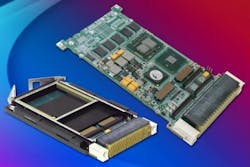General Atomics to develop 150-kilowatt chemical laser weapon in $39.8 million HELLADS contract from DARPA
ARLINGTON, Va., 26 June 2011.Laser weapons experts at the U.S. Defense Advanced Research Projects Agency (DARPA) in Arlington, Va., are laying plans to a 150-kilowatt high-energy laser weapon based on a combination of chemical laser technology and solid-state laser technology that could be mounted to military platforms as small as patrol ships, fighter aircraft, armored combat vehicles, and perhaps even unmanned vehicles. Building the laser weapon will be engineers at General Atomics Aeronautical Systems Inc. in San Diego.DARPA officials awarded a $39.8 million contract last week to General Atomics to develop a demonstration laser weapon system as part of the fourth phase of the DARPA High Energy Liquid Laser Area Defense System (HELLADS) program.HELLADS seeks to demonstrate a 150-kilowatt solid-state laser weapon that weighs about 1,650 pounds. The project, if it works, would demonstrate a laser weapon with a power-to-weight ratio 10 times better than existing laser systems, and could represent the next step in giving providing U.S. military forces with a fleet of "laser-blasting aircraft,” says Michael Perry, vice president of the General Atomics Laser and Electro-Optics (LEO) business unit.
Among the most promising applications of a relatively lightweight laser weapon are jet fighter self defense; ground defense against incoming rockets, mortars, and artillery rounds; and shipboard self defense against swarms of small attack boats. Laser weapons as strong as 150 kilowatts also could help destroy soft targets on the ground such as unarmored vehicles, radar systems, and communications equipment.
General Atomics has been working on HELLADS development since 2003, and the latest part of the program seeks to develop a laser weapon able to work in realistic military conditions. The company already has developed the technology and system prototypes demonstrating that building a full-up 150-kilowatt solid-state laser weapon is feasible. Textron Defense Systems in Wilmington, Mass., also has been involved in the DARPA HELLADS program.
General Atomics calls its HELLADS design a distributed-gain liquid laser. “It is inherently a combination of a solid-state and a liquid laser. It has attributes of a solid-state laser combined with the efficient cooling of a liquid laser. Liquid is an integral part of the laser itself, and also is the coolant,” Perry explains.
In developing the HELLADS prototype, one of the biggest challenges involved balancing output power with the needs for a laser pump system, laser power supply, and ability to cool the laser by removing waste heat. “Eighty percent of your size and weight is taken up with the diode pump system, power supply, and thermal management," Perry explains.
“We are developing a compact power system, compact thermal storage, and other ancillary packaging we need for the system, as well as lightweight beam control,” Perry says. General Atomics completed a prototype power system and heat-removal system last year.
One approach to enhancing the laser’s efficiency involved reducing the number of diodes in the laser’s pump system to reduce the overall size of the laser.
After General Atomics finishes building the full-up 150-kilowatt laser system, DARPA officials will compete a contract to integrate the General Atomics laser into a prototype laser weapon system, says Richard Bagnell, the HELLADS program manager at DARPA.
For more information contact General Atomics online at www.ga-asi.com, or DARPA at www.darpa.mil.

John Keller | Editor
John Keller is editor-in-chief of Military & Aerospace Electronics magazine, which provides extensive coverage and analysis of enabling electronic and optoelectronic technologies in military, space, and commercial aviation applications. A member of the Military & Aerospace Electronics staff since the magazine's founding in 1989, Mr. Keller took over as chief editor in 1995.

